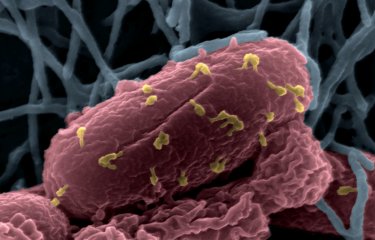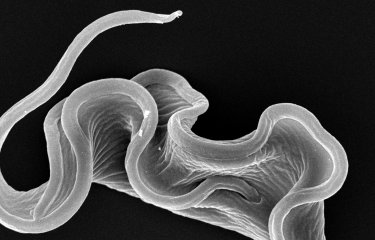Research teams working within the field of virtual reality to enable biologists to visualize and analyze super high-resolution microscopy data are still scarce at global level. Scientists at the Institut Pasteur and Institut Curie developed the Genuage software platform to enter cells and perform various types of measurements more effectively.
Scientists at the Institut Pasteur and Institut Curie have presented the Genuage software platform they developed in the scientific journal Nature Methods. This solution enables users to "enter cells" to understand and analyze biological phenomena occurring in them.

Jean-Baptiste Masson (PhD), Head of the Decision and Bayesian Computation Unit at the Institut Pasteur (Paris).
"Genuage is a virtual reality project improving the visualization and perception of data originating from "super-resolution" microscopy, which is widely used in life sciences. The entire solution was developed in partnership between Bassam Hajj's lab (Institut Curie) and my lab (Institut Pasteur). Thomas Blanc, the lead author of this publication was an intern in my lab and subsequently in Bassam's lab. Genuage was inspired by the DIVA project, with Mohamed El Beheiry as chief engineer on both projects."
"We worked with Jean-Baptiste Masson's Decision and Bayesian Computation lab at the Institut Pasteur to develop an open-source software platform enabling virtual reality to be used to visualize and analyze biological data from super-resolution microscopy," explains Bassam Hajj, CNRS research coordinator at the Institut Curie Physical Chemistry Unit (CNRS UMR168).
Genuage presents and analyzes images of point clouds. These points are taken from:
- data acquired through microscopy;
- and "single-molecule" detections.
This technique, awarded the 2014 Nobel Prize in Chemistry, is widely used to visualize internal structures of cells at very high resolution (nanoscopic scale) beyond that achievable with a conventional microscope.
Example of virtual reality selection of a complex 3D form of dot clouds. Learn more about the Youtube channel of the Genuage project.
Their previous software platform, Diva, offered physicians and biologists an immersive experience: Diva supported volumes composed of pixels originating from MRI scans, CT scans, fluorescence microscopy, etc.
Genuage is now capable of managing millions of points acquired from data generated by super-resolution photon microscopy techniques such as PALM or STORM (see below). Once assembled, these points represent infrastructure observed in 4D (in space and time).
Using the Genuage software, biologists can take a virtual walk inside cells, exploring cell interiors and visualizing organelles in an immersive environment at spatial scales that had previously not been possible, as the solution is capable of molecular-level imaging. This provides new opportunities to observe, study, and quantify cells' internal organization and architecture.
A propos des méthodes PALM ou STORM
To overcome the resolution limits of conventional microscopy, "super-resolution" microscopy methods were introduced, such as the PALM and STORM techniques, which appeared in 2006 and are based on single-molecule localization. While these methods allow structures to be visualized in the range of 20 nm, there is always scope for improvement.
- This provided the impetus for the Genuage project described here, enabling cell interiors to be visualized in an immersive environment.
- It also prompted the Institut Pasteur's ANNA-PALM project to increase the speed of STORM or PALM-type methods.
(2) See ANNA-PALM, an IT method for speeding up high-resolution microscopy - Institut Pasteur News
- And the Institut Pasteur's SODA project in which software was developed for fluorescence imaging (including super-resolution STORM imaging) to identify statistically coupled molecules and create spatial maps identifying coupled or isolated molecules.
(3) See SODA, a new analysis tool for fluorescence imaging - News from the Institut Pasteur
Source :
Genuage: visualize and analyze multidimensional single-molecule point cloud data in virtual reality, Nature Methods, September 20, 2020
Thomas Blanc** 1,2,5, Mohamed El Beheiry**1,2,3,4,5, Clément Caporal 1,2, Jean-Baptiste Masson* 3,4,6 and Bassam Hajj* 1,2,6
1. Laboratoire Physico-Chimie, Institut Curie, PSL Research University, CNRS UMR168.
2. Sorbonne Universités, UPMC Univ Paris 06
3. CNRS USR 3756, Department of Computational Biology, Institut Pasteur
4. CNRS UMR 3571, Department of Neuroscience, Institut Pasteur
For more information, please visit








